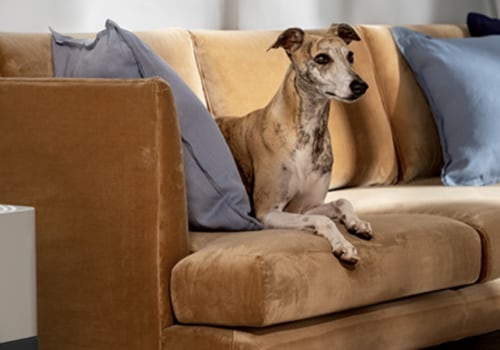It's important to remember that air purifiers can lessen the effects of allergens and pet hair, but they won't completely solve the problem. You may also need to take preventive measures to reduce the amount of shedding in your home. If your main issue is that smaller pet hairs move, you'll want to have a fine mesh filter that traps these hairs without them getting stuck. While this won't trap the hair that's lodged in the carpet or sofa (try a handheld vacuum for that), it's a great place to start. To reduce pet dander, air purifiers can be very effective devices, especially those with a HEPA filter.
This type of filter cleans the air and removes super-tiny particles, as small as 0.3 microns, which are smaller than pet dander (5-10 microns) on average. A useful solution may be to add an air purifier for pet dander and hair. An air purifier can help remove pet hair and dander from the air. Depending on the severity of the person's allergies, an air purifier can sometimes be enough to keep them in the same room as the family pet. It may even be enough for them to stay at home for a weekend.
While there are other things you can do to help someone with pet allergies, adding an air purifier is a good starting point and can definitely help improve the situation. Air purifiers with HEPA filters are designed to remove 99.97 percent of particles that are 0.3 microns in size. Therefore, an air purifier equipped with HEPA can help reduce some of the larger particles, such as airborne dust, pet dander, and dust mites in your home. If you have tufts of pet hair in the air, a HEPA filter can take care of these large particles. However, when it comes to very tiny particles of pet allergens that are shed from larger particles of dry saliva or pet dander, a HEPA filter is not as efficient.
Smaller molecules have a greater chance of passing through a HEPA filter and being expelled back into the air. If you breathe in any of these molecules, you may have an allergic reaction. To ensure that the air in your environment is well purified, I recommend using a HEPA air purifier. There are additional things you can do to help the person with a pet hair and dander allergy, while also helping your air purifier. The problem is that if you buy the wrong type of purifier you will end up spending a lot more money on new filters and you may not be able to keep the filters working efficiently. Place the air purifier vertically or horizontally on any desk or side table and it will clean the air in rooms up to 140 square feet to save space.
This is a big problem for people with cat allergies, since it's easy for cat hair to stick and spread out or just float in the air. The air purifier is most effective in 189-square-foot rooms, where you can change the air almost five times an hour. To build this list, he thoroughly researched air purifiers and considered factors such as filter type, room size, and additional features. The Molekule air purifier, which uses technology that can destroy the smallest allergens in pets, will do a better job of capturing pet dander and removing all other pet-related pollutants in the air of your home. Air purifiers work by using a fan to circulate air in a room and filter unwanted particles, hair, allergens and more. Pet owners may need to replace filters more often than average because of the large amount of pet dander and hair in their home, which can clog the filter.
Because they are so small, they can remain suspended in the air and are usually not addressed by traditional filters. A HEPA filter can help capture strands of fur or skin scales from pets, but it would need to be changed regularly and safely so as not to release particles into the air during the replacement process. It is important to understand that air purifiers cannot remove cat hair that has already settled and adhered to furniture and other surfaces. Do air purifiers really help with pet hair and odors? The answer is yes! Air purifiers equipped with HEPA filters are designed specifically for this purpose - they capture airborne particles like pet dander and fur before they enter your lungs.






